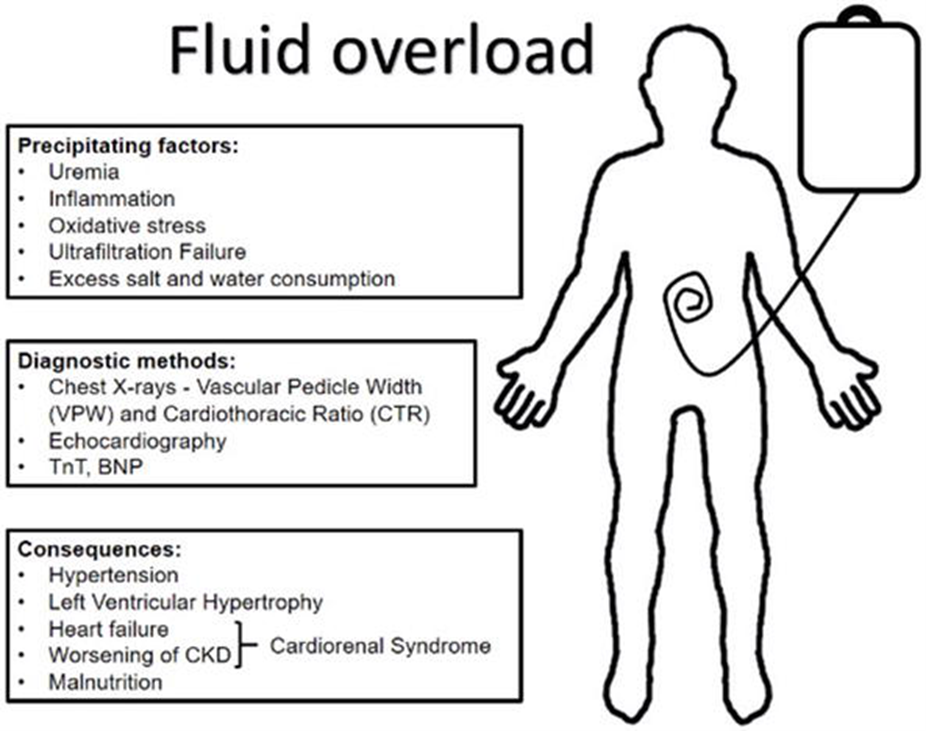A client is receiving IV fluids at 150 mL/hr. Which of the following findings indicates that the client is experiencing fluid overload?
Oliguria
Bradycardia
Dyspnea
Poor skin turgor
The Correct Answer is C
A. Oliguria. This is incorrect because oliguria, or decreased urine output, is a sign of fluid volume deficit, not fluid volume overload.
B. Bradycardia. This is incorrect because bradycardia, or slow heart rate, is not a typical sign of fluid volume overload, unless the client has a cardiac condition that affects the heart's response to fluid overload.
C. Dyspnea. This is correct because dyspnea, or difficulty breathing, is a common sign of fluid volume overload, as excess fluid accumulates in the lungs and impairs gas exchange.
D. Poor skin turgor. This is incorrect because poor skin turgor, or decreased elasticity of the skin, is a sign of dehydration, not fluid volume overload.

Nursing Test Bank
Naxlex Comprehensive Predictor Exams
Related Questions
Correct Answer is D
Explanation
A. This choice is incorrect because verapamil and TPN do not have a significant food and medication interaction. Verapamil is a calcium channel blocker that can lower blood pressure and heart rate, while TPN is a form of intravenous nutrition that provides calories, electrolytes, vitamins, and minerals. The nurse should monitor the client's vital signs and blood glucose levels, but there is no need to intervene to prevent an interaction.
B. This choice is incorrect because phenytoin and milkshakes do not have a significant food and medication interaction. Phenytoin is an anticonvulsant that can decrease the absorption of some vitamins, such as folic acid and vitamin D, but milkshakes are not a major source of these nutrients. The nurse should encourage the client to eat a balanced diet and take supplements as prescribed, but there is no need to intervene to prevent an interaction.
C. This choice is incorrect because potassium-rich foods and furosemide do not have a significant food and medication interaction. Furosemide is a loop diuretic that can cause hypokalemia, or low potassium levels, but potassium-rich foods can help prevent this complication. The nurse should monitor the client's electrolyte levels and fluid balance, but there is no need to intervene to prevent an interaction.
D. This choice is correct because MAOIs and cheeseburgers have a significant food and medication interaction. MAOIs are antidepressants that can cause hypertensive crisis, or dangerously high blood pressure, if the client consumes foods that contain tyramine, such as aged cheeses, cured meats, fermented foods, and beer. The nurse should intervene to prevent the client from eating a cheeseburger and educate the client about avoiding tyramine-containing foods while taking MAOIs.
Correct Answer is D
Explanation
- A. Diarrhea is not an adverse effect of amitriptyline, which is a tricyclic antidepressant (TCA). Diarrhea may be caused by other factors, such as infection, food intolerance, or stress. Therefore, this choice is incorrect.
- B. Frequent urination is not an adverse effect of amitriptyline either. Frequent urination may be a sign of diabetes, urinary tract infection, or other conditions that affect the kidneys or bladder. Therefore, this choice is also incorrect.
- C. Excessive salivation is not an adverse effect of amitriptyline as well. Excessive salivation may be due to increased production of saliva, difficulty swallowing, or mouth irritation. Therefore, this choice is incorrect too.
- D. Blurred vision is an adverse effect of amitriptyline and other TCAs. Amitriptyline can cause anticholinergic effects, such as dry mouth, constipation, urinary retention, and blurred vision. These effects are more pronounced in older adults and can impair their daily functioning and quality of life. Therefore, this choice is correct and the nurse should identify it as an adverse effect of the medication.
Whether you are a student looking to ace your exams or a practicing nurse seeking to enhance your expertise , our nursing education contents will empower you with the confidence and competence to make a difference in the lives of patients and become a respected leader in the healthcare field.
Visit Naxlex, invest in your future and unlock endless possibilities with our unparalleled nursing education contents today
Report Wrong Answer on the Current Question
Do you disagree with the answer? If yes, what is your expected answer? Explain.
Kindly be descriptive with the issue you are facing.
